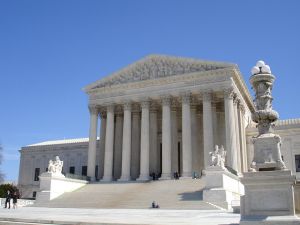As an experienced San Diego litigation attorney, this writer knows just how devastating it is when someone learns that a court judgment has been entered against them without their knowledge. This usually occurs via what is called a default judgment. The plaintiff serves a summons and complaint on the defendant and, after the defendant fails to answer the complaint within the proscribed time limit, asks the court to enter judgment in its favor. The problem is that sometimes, default judgments are entered against people that had no idea that a legal case ever existed. This can be intentional where a plaintiff purposefully files a fraudulent proof of service claiming to have properly served the summons and complaint on the defendant, or unintentional where a plaintiff served the summons and complaint on an address they believed to be the Defendant’s correct address. There are also instances in which a defendant may have had knowledge of the case but for some excusable reason failed to participate in the case resulting in a judgment against them. Once a default judgment is entered against you, it is the same as any judgment. With a judgment, a plaintiff can attach bank accounts, garnish wages and put liens on real property, among other things.
 Fortunately, California law provides defendants under these circumstances ways to set aside the default (essentially erasing it). However, timing is critical and it is important to act fast once you learn that a judgment has been entered against you. It’s advisable to contact an experienced litigation lawyer in San Diego as soon as possible to avoid missing important deadlines. Setting aside default judgments are governed by the following California law: California Code of Civil Procedure (“C.C.P.”) §§ 473, 473.1 and 473.5.
Fortunately, California law provides defendants under these circumstances ways to set aside the default (essentially erasing it). However, timing is critical and it is important to act fast once you learn that a judgment has been entered against you. It’s advisable to contact an experienced litigation lawyer in San Diego as soon as possible to avoid missing important deadlines. Setting aside default judgments are governed by the following California law: California Code of Civil Procedure (“C.C.P.”) §§ 473, 473.1 and 473.5.
Mistake, Inadvertence, Surprise or Excusable Neglect (C.C.P. § 473(b))
 San Diego Business Lawyer Blog
San Diego Business Lawyer Blog


 tigation, are complicated for lay persons. Whether seeking default or reacting to one entered against you, it is best to consult with and experienced
tigation, are complicated for lay persons. Whether seeking default or reacting to one entered against you, it is best to consult with and experienced 
 If the damages are less than what it will cost to litigate the case, there is very little benefit in suing. Aside from the moral vindication, risking $50,000.00 to fight a court battle where the damages are $50,000.00 is effectively a useless exercise no matter how low the risk of losing is. Moreover, it’s difficult to place a value on the emotional cost that comes with litigation. The battle itself takes a toll. Determining whether the damages are outweighed by the costs requires careful evaluation of numerous factors including the risk of losing and whether or not attorney fees are recoverable. The risk of losing is not always clear. The first step in analyzing risk is analyzing the merits of the case, something that should be analyzed with the assistance of an experienced
If the damages are less than what it will cost to litigate the case, there is very little benefit in suing. Aside from the moral vindication, risking $50,000.00 to fight a court battle where the damages are $50,000.00 is effectively a useless exercise no matter how low the risk of losing is. Moreover, it’s difficult to place a value on the emotional cost that comes with litigation. The battle itself takes a toll. Determining whether the damages are outweighed by the costs requires careful evaluation of numerous factors including the risk of losing and whether or not attorney fees are recoverable. The risk of losing is not always clear. The first step in analyzing risk is analyzing the merits of the case, something that should be analyzed with the assistance of an experienced  The public policy behind derivative actions is to protect corporations (especially publicly traded corporations) from the whims of fickle shareholders unhappy with share values. Even though it may be difficult for these fickle shareholders to win, the ability to bring actions without limitation can create significant waste. In essence, the goal is to reduce the number of frivolous suits and to encourage informal resolution, and there is a plethora of corporate law dictating the procedures necessary for bringing derivative actions. In general, derivative law requires shareholders to make a written demand on the corporate officers requesting that action be taken to investigate and if necessary file a lawsuit on the corporation’s behalf seeking to remedy the wrongs. This gives the corporation the opportunity to address the shareholders’ concerns in an effort to avoid
The public policy behind derivative actions is to protect corporations (especially publicly traded corporations) from the whims of fickle shareholders unhappy with share values. Even though it may be difficult for these fickle shareholders to win, the ability to bring actions without limitation can create significant waste. In essence, the goal is to reduce the number of frivolous suits and to encourage informal resolution, and there is a plethora of corporate law dictating the procedures necessary for bringing derivative actions. In general, derivative law requires shareholders to make a written demand on the corporate officers requesting that action be taken to investigate and if necessary file a lawsuit on the corporation’s behalf seeking to remedy the wrongs. This gives the corporation the opportunity to address the shareholders’ concerns in an effort to avoid  Most people would be surprised at the number of business owners (in San Diego alone) that choose to ignore lawsuits only to find out later that judgment has been entered against them for tens of thousands of dollars or even hundreds of thousands of dollars. The existence of the judgment is often discovered only after bank accounts are attached or a Sheriff shows up one day to conduct a till tap (collecting money from the cash register at the end of the day to satisfy the judgment). Others will rush to resolve the matter without the assistance of an experienced business litigator hoping that they can avoid the problem by agreeing to resolve the dispute informally. While informal resolution is certainly preferable, signing agreements without legal representation is extremely risky. The attorney representing the other side is armed with tools to maximize the benefit to their clients. The harm to business owners under this scenario can be incalculable. Usually, unrepresented business owners have no idea of the true extent of what they are agreeing to. For instance, a business owner who agrees to pay off a debt in twenty-four monthly payments may unknowingly stipulate to forfeiting all of her shares in a corporation (a disastrous outcome) if she is late even one time on her payments. An experienced business lawyer will build a cushion regarding late payments into any agreement settling the matter.
Most people would be surprised at the number of business owners (in San Diego alone) that choose to ignore lawsuits only to find out later that judgment has been entered against them for tens of thousands of dollars or even hundreds of thousands of dollars. The existence of the judgment is often discovered only after bank accounts are attached or a Sheriff shows up one day to conduct a till tap (collecting money from the cash register at the end of the day to satisfy the judgment). Others will rush to resolve the matter without the assistance of an experienced business litigator hoping that they can avoid the problem by agreeing to resolve the dispute informally. While informal resolution is certainly preferable, signing agreements without legal representation is extremely risky. The attorney representing the other side is armed with tools to maximize the benefit to their clients. The harm to business owners under this scenario can be incalculable. Usually, unrepresented business owners have no idea of the true extent of what they are agreeing to. For instance, a business owner who agrees to pay off a debt in twenty-four monthly payments may unknowingly stipulate to forfeiting all of her shares in a corporation (a disastrous outcome) if she is late even one time on her payments. An experienced business lawyer will build a cushion regarding late payments into any agreement settling the matter. There is a school of thought in both the legal and non-legal communities that discovery can also be used as an effective bulldozing tool (often referred to as “guerrilla discovery”), and the sad truth is that this is indeed true. The idea is to propound so much discovery (whether via written requests or deposition testimony) and to provide as much resistance to discovery propounded on you that the other side cowers in response to the onslaught. Between attorney fees, court reporter fees, transcript costs and expert fees, the total cost for the discovery phase alone can be astronomical. Even in a relatively simple case between two San Diego business owners, an attorney can propound hundreds and hundreds of interrogatories, requests for production of documents and requests for admissions (a discovery tool that allows parties to ask the other side to admit certain important facts in the litigation). If the propounding party feels that the discovery responses are inadequate for any reason a round of negotiation and motions to compel follow. By the time all of this is accomplished, the opposing party’s attorney may spend fifty to one hundred hours dealing with this written discovery alone. Even the most affordable litigator whose fees are in the low $200.00 per hour range, fifty to one hundred hours for a single battle over written discovery adds up fast. In addition, a guerrilla campaign will include taking the depositions of every possible witness resulting in significant additional cost. It is not uncommon for a party to notice the depositions of twenty or more witnesses. Some of these depositions are of business owners or managers and can last for days. The above scenario is an example of what can occur even with the simplest of cases. In more complex cases like patent litigation, attorney fees can be hundreds of thousands of dollars (for the discovery phase alone). As one might imagine, this type of onslaught can be daunting to the opposing party.
There is a school of thought in both the legal and non-legal communities that discovery can also be used as an effective bulldozing tool (often referred to as “guerrilla discovery”), and the sad truth is that this is indeed true. The idea is to propound so much discovery (whether via written requests or deposition testimony) and to provide as much resistance to discovery propounded on you that the other side cowers in response to the onslaught. Between attorney fees, court reporter fees, transcript costs and expert fees, the total cost for the discovery phase alone can be astronomical. Even in a relatively simple case between two San Diego business owners, an attorney can propound hundreds and hundreds of interrogatories, requests for production of documents and requests for admissions (a discovery tool that allows parties to ask the other side to admit certain important facts in the litigation). If the propounding party feels that the discovery responses are inadequate for any reason a round of negotiation and motions to compel follow. By the time all of this is accomplished, the opposing party’s attorney may spend fifty to one hundred hours dealing with this written discovery alone. Even the most affordable litigator whose fees are in the low $200.00 per hour range, fifty to one hundred hours for a single battle over written discovery adds up fast. In addition, a guerrilla campaign will include taking the depositions of every possible witness resulting in significant additional cost. It is not uncommon for a party to notice the depositions of twenty or more witnesses. Some of these depositions are of business owners or managers and can last for days. The above scenario is an example of what can occur even with the simplest of cases. In more complex cases like patent litigation, attorney fees can be hundreds of thousands of dollars (for the discovery phase alone). As one might imagine, this type of onslaught can be daunting to the opposing party.  Where individual damages are small, the class action waiver most often acts as a bar to relief. From the corporate perspective, the class action waiver protects companies from frivolous suits brought by unscrupulous lawyers. Currently, the enforceability of a class action waiver under California law is unclear. One side is concerned with the protection of consumers who have little choice in most cases but to enter into whatever agreement they are presented (i.e. signing a contract with a cell phone provider). The other side is concerned with protecting the strong policy goal of encourage arbitration and reducing the pressure on overwhelmed courts.
Where individual damages are small, the class action waiver most often acts as a bar to relief. From the corporate perspective, the class action waiver protects companies from frivolous suits brought by unscrupulous lawyers. Currently, the enforceability of a class action waiver under California law is unclear. One side is concerned with the protection of consumers who have little choice in most cases but to enter into whatever agreement they are presented (i.e. signing a contract with a cell phone provider). The other side is concerned with protecting the strong policy goal of encourage arbitration and reducing the pressure on overwhelmed courts.  The first step in determining when a statute of limitations begins to run is to ascertain when the cause of action “arose” or when it “accrued.” A cause of action arises when the conduct upon which the claim is based occurs. A cause of action accrues when the right to take legal action arises. Generally, the statute of limitations begins to run from the time a cause of action accrues.
The first step in determining when a statute of limitations begins to run is to ascertain when the cause of action “arose” or when it “accrued.” A cause of action arises when the conduct upon which the claim is based occurs. A cause of action accrues when the right to take legal action arises. Generally, the statute of limitations begins to run from the time a cause of action accrues. In Federal Deposit Insurance Corp. v. Perry (C.D. CA December 13, 2011) (Case No. CV 11-5561 ODW), the U.S. District Court for the Central District of California held that the business judgment rule is inapplicable to decisions made by corporate officers (as opposed to “directors”) on behalf of the corporation. In Perry, the Federal Deposit Insurance Commission (“FDIC”) sued the defendant, Matthew Perry, in his capacity as CEO of Indymac Bank, alleging that Perry breached his fiduciary duties by negligently allowing the bank to generate over $10 billion in risky residential loans.
In Federal Deposit Insurance Corp. v. Perry (C.D. CA December 13, 2011) (Case No. CV 11-5561 ODW), the U.S. District Court for the Central District of California held that the business judgment rule is inapplicable to decisions made by corporate officers (as opposed to “directors”) on behalf of the corporation. In Perry, the Federal Deposit Insurance Commission (“FDIC”) sued the defendant, Matthew Perry, in his capacity as CEO of Indymac Bank, alleging that Perry breached his fiduciary duties by negligently allowing the bank to generate over $10 billion in risky residential loans.